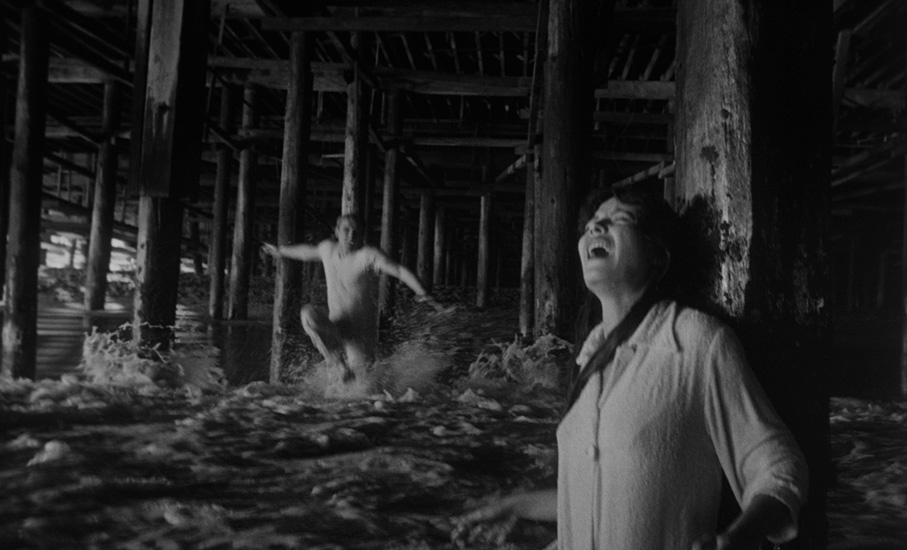
Curtis Harrington is one of the most enigmatic figures in the history of Hollywood. A forerunner in many respects to the New Queer cinema of the nineties, Harrington began his career in film at the center of the avant-garde. Kenneth Anger, Maya Deren and Marjorie Cameron all worked with and were close to Harrington. In the sixties Harrington began working for Roger Corman and later in the eighties for Canon Films. Harrington never lost his ties to experimental film nor did he ever find mainstream success.
Night Tide (1961) was Harrington’s first film for Corman as a writer and director. A number of Harrington’s associates from his days as Kenneth Anger’s cameraman were retained to work on the film both as crew and as cast members. Given Harrington’s background it’s no surprise that Night Tide defies the mold of Corman’s productions in the early sixties. It is neither a straight horror film nor a teen rebellion film. It’s undeniable that elements from each of those niche genres is present in Night Tide, yet Harrington’s direction aligns the film more closely with Lilith (1964) and Carnival Of Souls (1962).
Harrington’s plot couches the familiarly tragic tale of a first love gone wrong in the milieu of the macabre. Johnny (Dennis Hopper) is a sailor on shore leave at Venice Beach who meets Mora (Linda Lawson), a girl working as a mermaid in a sideshow run by her adoptive father Cpt. Murdock (Gavin Muir). The film twists and turns as Johnny navigates the possibility that Mora is a real mermaid as she claims to be and that she may also be responsible for two murders. Then, rather than seeing Johnny die, Mora drowns herself. Sometime later Johnny uncovers the truth that Cpt. Murdock had planted this idea of being a mermaid in Mora’s mind as a means of controlling her and that it is he who has been murdering her suitors.
This Neo-Gothic fable is a slow paced exploration of trust, fear, and paranoia. Harrington’s script constantly reinforcing the notion that Mora is a supernatural being while visually Harrington embraces a more realist approach that is wholly contradictory. Thusly the audience is as unsure as Hopper’s sailor. By keeping possibilities in the forefront of the proceedings Harrington effectively manipulates the viewer extraordinarily well. The few dream sequences in the film, all from Johnny’s perspective, feature supernatural elements that are rendered as a kind of “nightmare camp” that would make Jack Smith proud.
Night Tide is one of the best films Corman released in the sixties. Today one might even interpret Mora’s identity crisis in a Queer context, adding a new agency to the film. Regardless Night Tide is primarily unique for being the bridge between the avant-garde cinema of the fifties and the countercultural B-Pictures of the sixties.
